
© Doug Gifford. (Click image for larger version)
Natalia Osipova
ISADORA: A Tribute to Isadora Duncan in Two Acts
★★★✰✰
Costa Mesa, Segerstrom Center for the Arts
10 August 2018
www.instagram.com/nataliaosipova86
www.scfta.org
Natalia Osipova’s ISADORA: A Tribute to Isadora Duncan in Two Acts comes to a poignant end. Not the one you’re thinking of – Isadora Duncan’s 1927 death from a broken neck, caused by her scarf catching on an axle of the car she was riding in. There’s an extra ending to Ospiova’s contemporary dance-theater paean, which premiered at the Segerstrom Center for the Arts on Friday 10 August, and it’s all about Osipova.
After Duncan’s demise, Pantheon-esque columns and calm ocean waves are projected onto the stage wall, and a dozen white-robed dancers stand in a semicircle. It could be heaven or Mt. Olympus that Osipova then dances into from the wings, channeling Duncan’s spirit into a realm of light and peace. Osipova kneels and plants her hand on the sacred stage, then stands and looks out to the audience, staking her own claim to artistic freedom through Duncan’s apotheosis by proxy.
Women in Duncan’s day were freeing themselves from corsets, and Duncan stripped dancing of both sartorial restrictions and the artificialities of technique, in favor of chiffon goddess gowns and natural movement inspired by Greek sculpture. Largely unpopular in America, Duncan found fame in London, Europe and, coincidentally, Russia.

© Doug Gifford. (Click image for larger version)
Osipova has long admired Duncan as a standard-bearer of artistic independence, which Osipova has sought since leaving the Bolshoi Ballet, where she was a principal and star, in 2011. Her previous indie forays at the Segerstrom include 2014’s Solo for Two, with choreography created for her and Ivan Vasiliev by Arthur Pita, Ohad Naharin and Sidi Larbi Cherkaoui. ISADORA is her first full-evening work there; it opens at Moscow’s Stanislavsky Theatre in September.
Half-narrative and semi-abstract, ISADORA hop-skips through the dancer’s life; it’s described in the program notes as a “freely interpreted biography,” and it cherry-picks around unsavory elements like Duncan’s alcoholism and the stigma of her scandalous love life. Choreographed by the Mariinsky’s Vladimir Varnava, who created the libretto with Konstantin Federov, ISADORA features dynamic back-wall and downstage scrim projections by Ilya Starilov in lieu of physical sets. Paired with a freely interpreted version of Prokofiev’s 1945 Cinderella score, it’s laden with angst and peppered with skewed whimsy, as necessitated by the music. Osipova fulfilled another long-held dream by performing to that score, played with clarity and vivacious enthusiasm by the Mikhailovsky Orchestra under conductor Pavel Sorokin.
For all the details lavished on ISADORA, we never get a real sense for what she actually did; Varnava’s choreography hints very vaguely at it in some flexed-foot jetés and front-attitude hops, but the overall look is modern, aggressive, expressionistic. It could be described as interpretive movement-mime rather than pure dance. Anyone expecting Osipova’s ballet pyrotechnics is likely to be disappointed or at least perplexed; at intermission the woman next to me asked, “When are they going to start dancing?” ISADORA seems to reflect Osipova’s feeling-states, the bits and pieces of Duncan’s life that she most relates to.

© Doug Gifford. (Click image for larger version)
Act I opens on Osipova’s solo with a scarf, foreshadowing the end in the least subtle terms. The scarf actually rarely leaves the stage; it hovers as an undulating swath of color in most of Starilov’s projections. Starilov’s fantastical style is Steampunk-meets-Terry Gilliam, an animated palimpsest forever rearranging vintage clip-art of collapsed antiquities, trees and birds, clocks ticking backward, shells floating in the sky. I lost track of the dancing while deciphering a rainfall of electric fans, rolling pins and seashells. Perhaps Osipova simply wants the audience to empathize by whatever channel is most effective, be it music, dance or visual spectacle.
We meet Duncan in San Francisco, where she was born in 1877, and see the paternal abandonment that impoverished her family; Terpsichore (a scene-stealing Emily Anderson), the goddess of dance, intercedes and touches Duncan with inspiration, and serves as a one-woman chorus all along. A clumsy Duncan takes ballet class alongside a pink-bodysuited corps (Galya Solodovnikova created a rainbow of monochrome costumes throughout), facing backward when they face forward, her akimbo arms going left when their graceful port de bras goes right. It’s meant to be funny, seeing such a great ballerina act the klutz, but it was one of several scenes in which the timing didn’t quite pay off, and audience response was light.
Veronika Part got more titters as The Ballerina, dressed in a Sleeping Beauty pink tutu and a campy turban and aigrette; Alexey Lyubimov was the ballet master. Duncan’s signature modern style emerges in a group of chiffon-draped women, probably meant to be the “Isadorables,” the nubile dancers Duncan later adopted. Duncan falls in love and has a son (complete with baby bump) with Paris Singer, who cruises onstage in a speedster; in real life, Duncan also had a daughter with a previous lover, and projections allude to the children’s accidental drowning.

© Doug Gifford.
Osipova uses Duncan’s maternal grief to set the tone for Act II, which shifts into more-effective abstraction as she relocates to Russia (in real life, a decade passed in between). Framed by red-tinted lighting and projections, Vladimir Lenin (Lyubimov again) runs young comrades through their calisthenics (à la Alexei Ratmansky’s 2005 marvelous The Bolt, in which Osipova starred), and the Red Army emerges from under a massive sheet of claret fabric – another scarf – that is stretched and wrapped around Osipova in a beautiful piece of stagecraft.
Vladimir Dorokhin is terrific as the Russian poet Sergei Yesenin, Duncan’s husband in 1922-23. In lighthearted moments, his body seems to go in ten directions at once, like a five-dimensional clown, and when begging Duncan for forgiveness after a raunchy night on the town, he is yearning and tender and troubled.
We all know where this is headed, and the speedster eventually returns to take Duncan and her scarf for one last drive. The death is handled symbolically in projections, with a portrait of Duncan hovering over Osipova as she dances in a nude body suit, under a shadowy spotlight. In the relative simplicity of the scene, and the immediacy of her dancing, we finally get to the heart of things. Osipova didn’t need an hour and forty-five minutes of semi-storytelling and busy projections to explain her yearning for freedom, or her anguish at life’s fragility; that three-minute solo said it all.









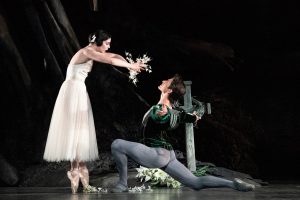
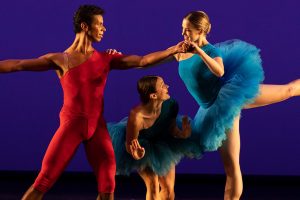
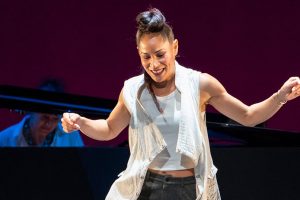
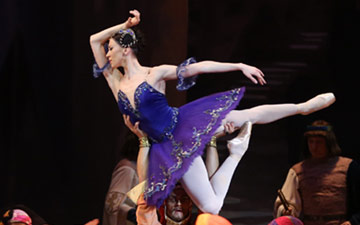

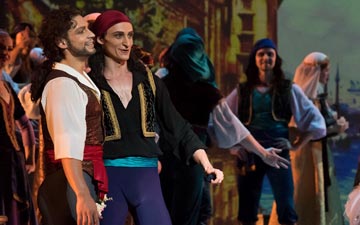

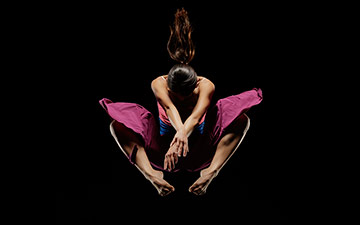
My understanding is that Osipova danced Cinderella in Ratmansky’s version of it for the Maryinsky or Kirov in his first major balletic commission,
I totally agree with this review. I think the biggest mistake was using the Prokofiev CINDERELLA score. So much time was spent filling in the needs of the score with trivia, and, as a whole, I never felt the true inner being of Isadora Duncan. Osipova is a great ballerina, and I think she could have done better with a better approach. Part was totally wasted as the ballerina, but the dancing sensation for me was Dorokhin as Yesenin. He was amazing, both physically and dramatically.
To answer Renee Renouf, I don’t know if Osipova ever danced Ratmansky’s CINDERELLA, but I saw Vishneva do it at the Mariinsky, when I was staging NOCES there in 2003. She was wonderful, and I enjoyed the ballet.